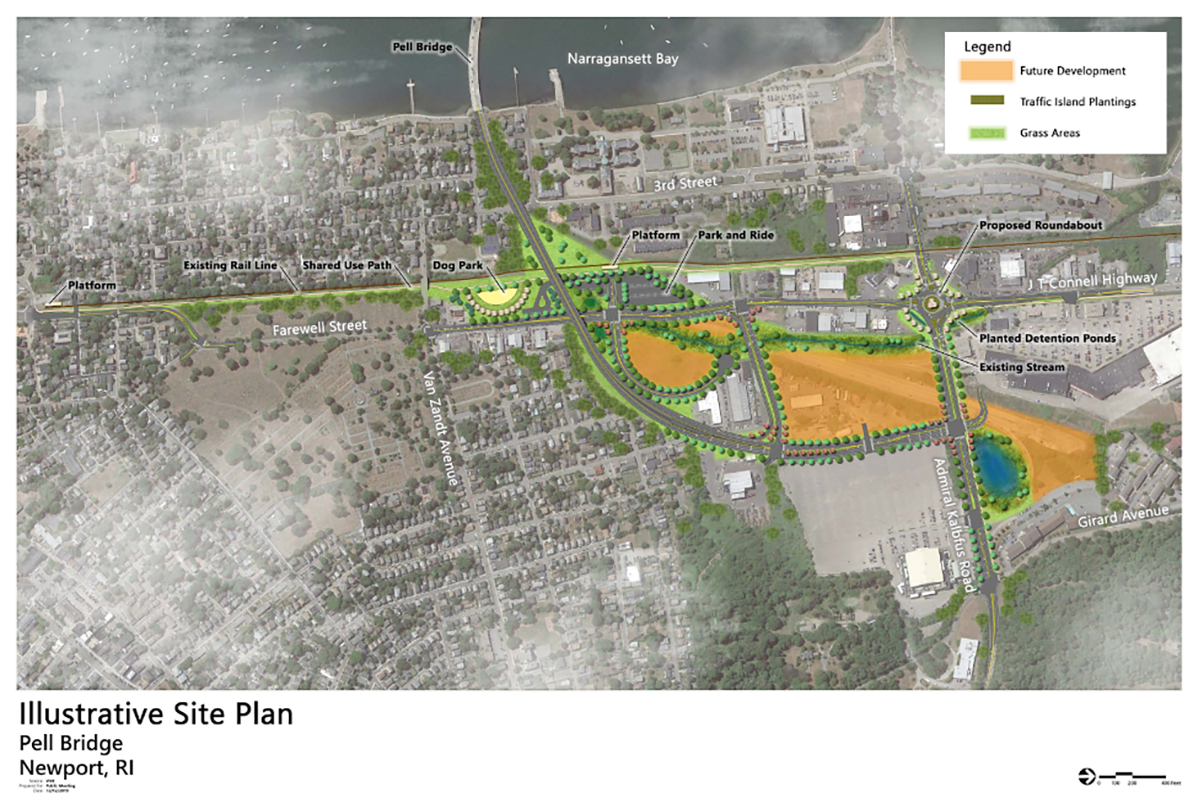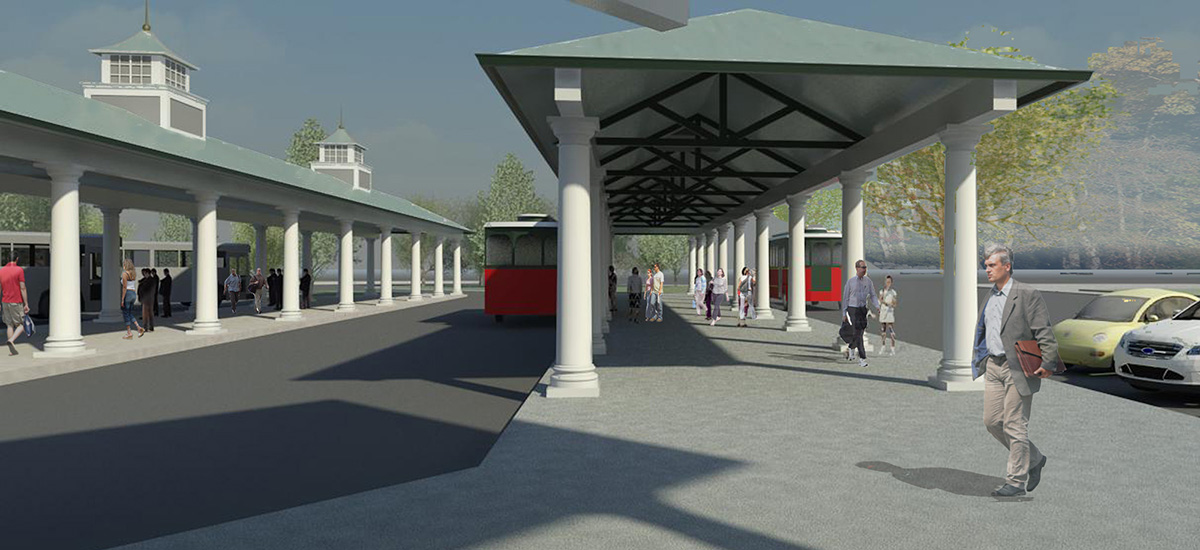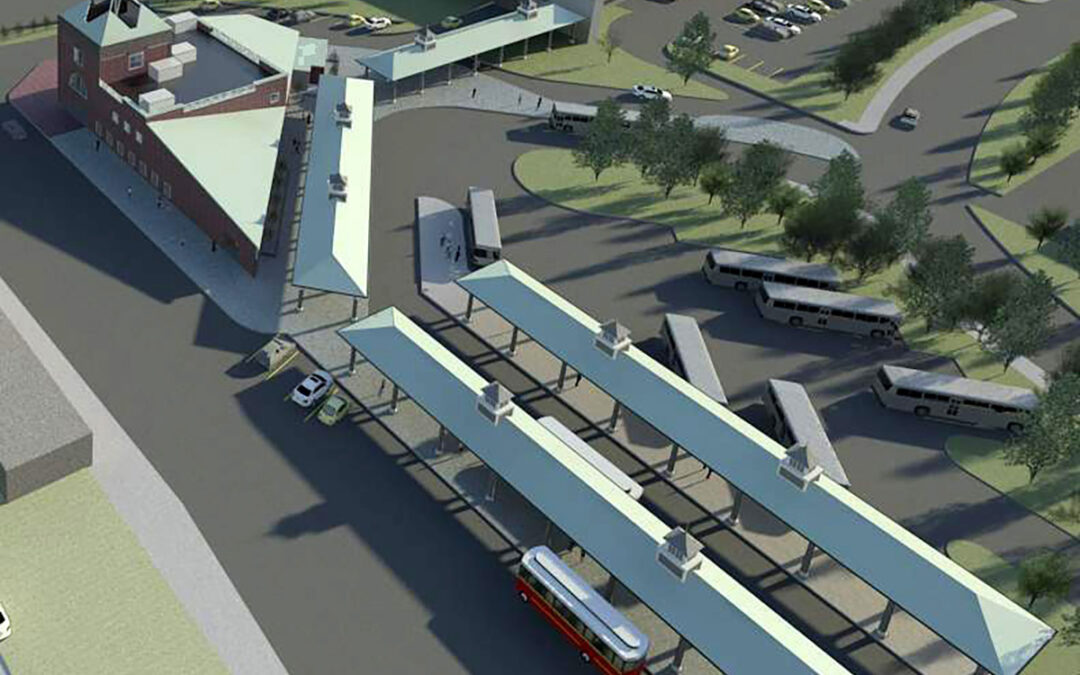A4 Architecture Gateway Design in Newport, RI -Transportation Oriented Development
Transportation Oriented Development (TOD) is an urban planning and design concept that emphasizes the integration of land use and transportation to create walkable, mixed-use communities with convenient access to public transportation. The idea is to create urban environments that reduce reliance on cars and promote sustainable modes of transportation, such as biking, walking, and public transit. These ideas are also closely affiliated with the urban design philosophy called “Smart Growth”, which is the approach that seeks to develop land resources in a comfortable and sustainable manner

North End Development Plan – Newport, RI
The roots of TOD in the United States can be traced back to the early 20th century when streetcar lines were first introduced. Streetcar suburbs emerged as a result, with residential developments popping up along transit corridors. After World War II, however, the increased popularity of cars led to a decline in public transit and a shift towards automobile-oriented development. This trend continued until the 1990s when concerns about traffic congestion, air pollution, and suburban sprawl began to prompt a renewed interest in TOD.
In the late 1990s, under President Clinton, the federal government began to promote TOD through a series of initiatives, including the Intermodal Surface Transportation Efficiency Act (TEA) of 1991 and the Transportation Equity Act for the 21st Century (TEA 21) of 1998. These initiatives provided funding for transportation infrastructure projects that promoted smart growth, livable communities, and TOD. The government also established the Transit-Oriented Development Technical Assistance Initiative, which provided technical assistance to communities interested in pursuing TOD.
Since then, TOD has become increasingly popular in the United States, with many cities and metropolitan areas adopting the concept. Examples of successful TOD projects include Arlington County’s Ballston-Virginia Square neighborhood in Virginia, the Pearl District in Portland, Oregon, and the redevelopment of Union Station in Denver, Colorado.
Despite the success of TOD in some areas, there are also challenges associated with its implementation. One of the main challenges is the high cost of development, which can be a barrier to entry for low-income residents. TOD often involves high-density development, which can drive up property values and make it difficult for affordable housing to be built. It often requires the modification of local zoning codes to allow for mixed use zones with higher densities, which can sometimes face local political pushback. Other communities have expressed concerns about the impact of TOD on local businesses and the existing character of their neighborhoods.

A4 Architecture Gateway Design – Newport, RI
To address these challenges, some cities have adopted policies and strategies to promote equitable TOD. For example, Minneapolis has implemented a policy that requires developers to set aside a percentage of affordable units in new TOD projects. Other cities have established community land trusts to preserve affordable housing near transit stations.
Looking to the future, it is likely that TOD will continue to play an ever more important role in urban planning and development in the United States. The Biden administration has proposed a $1 trillion infrastructure plan that includes funding for public transit and smart growth initiatives, which could further promote TOD. Additionally, as concerns about climate change and sustainable development become increasingly urgent, the emphasis on reducing reliance on cars and promoting alternative modes of transportation is assuredly likely to grow in the future.
Transportation Oriented Development is inherently an urban oriented design approach, integrating the construction of compact residential units into the transit infrastructure of a particular community. It allows for the “live, work, play” model that has always made cities like New York, Boston and San Francisco immensely popular with young professionals. Smaller cities like Newport, Rhode Island that are already highly walkable are often very well suited to TOD since well-designed bus routes and bicycle paths can take the place of more expensive systems like subways.

Completed Gateway Design – Newport, RI
It will take time to adapt the outdated zoning and suburban mentality of the last sixty years in cities like Newport, but the demand for more affordable “workforce housing” that is in demand by young professionals is strong. Furthermore, the need to develop communities that are more accessible and sustainable means that TOD will be an ever-larger portion of new residential construction in the future. Not just in cities like Newport but across the United States.
Ross Cann, RA, AIA, LEED AP, is an author, historian, and practicing architect living and working in Newport, RI. He holds degrees with honor in Architecture from Yale, Cambridge, and Columbia Universities.
